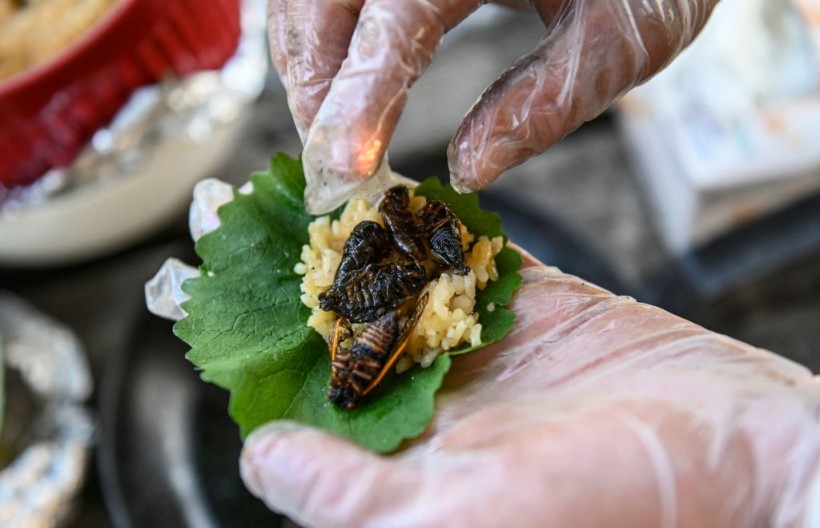While swarms of cicadas are invading the US, these insects have also been growing as a food trend.
Cicada Delicacies
Eating them has become one way Americans deal with their great influx. These tiny insects have low fat, high protein, and a nutty taste, as described by those who have eaten them.
Now, both home and restaurant cooks have been using these buzzing insects for various dishes, such as salads and stir-fries.
Bill Broadbent, the president of Entosense, an edible insect company based in Maine, says that cicadas contain a high protein content that can be compared to beef in terms of nutritional value. They also have healthy fats, low calories and carbohydrates, and rich antioxidants. Broadbent adds that insects' protein is actually animal protein that includes the important amino acids.
Bug Appetit, a restaurant in the Audubon Insectarium of New Orleans, serves cicada delicacies such as roasted cicadas and cicada salad. Zack Lemann, the curator of the Insectarium's animal collections, has been legally cleared to serve cicadas that were wildly caught.
Philadelphia-based El Ray has also used cicadas. These insects are chopped for salsas and blended for potato soup to add a nutty taste. Chicago-based Bar Sotano also plans to include these bugs in its menu.
Aside from restaurants and professional chefs, some home cooks are also incorporating these insects into their menus. For one, a couple from South Carolina was reported to host a cicada dinner party, wherein the insects were wrapped with bacon and fried with Cajun spices. They even got made into praline.
ALSO READ: Could Eating Insects Be Good for You? Study Says Their Shells May Trigger Benefits for Metabolism
Are Cicadas Safe To Eat?
Considering the growing presence of these bugs in delicacies, one may wonder if they are actually safe to eat. According to the Food and Drug Administration, one must not eat these insects if they are allergic to seafood, as these insects are shrimp.
Nevertheless, as long as they are prepared appropriately, these insects with soft shells can be enjoyed safely, leading to great environmental and nutritional benefits.
Dr. Eric Benson, a bug expert from Clemson University, says that while cicadas are safe for consumption, cooking them first could be better. This is because they come from the ground, so they could contain parasites and bacteria. Dr. Benson also explains that cicadas are better when they are soft shortly after molting and when they have no wings.
According to Jim Warner, the former food and nutrition program director of the Ohio State University Medical Center, home cooks must gather cicadas from wooded areas away from their homes. He adds that it is important to steer clear of well-manicured yards because lawn chemicals and contaminants could have been absorbed by the cicadas.
However, according to Dr. Wade Syers, a food safety specialist from Michigan State University, foraging these insects could yield possible health risks. Dr. Syers explains that there are various risks associated with these bugs, one of which is the lack of research regarding the gravity of such risks.
RELATED ARTICLE: Edible Insects, Anyone? This Entrepreneur Makes Pizza Dough from Scratch, Includes Cricket Powder in Ingredients
Check out more news and information on Environment & Climate in Science Times.












![Venus, Earth and Jupiter May Have Something to Do With the Sun's Multi-Rhythmic Solar Heartbeat [Study]](https://1721181113.rsc.cdn77.org/data/thumbs/full/53978/258/146/50/40/venus-earth-and-jupiter-may-have-something-to-do-with-the-suns-multi-rhythmic-solar-heartbeat-study.jpeg)


